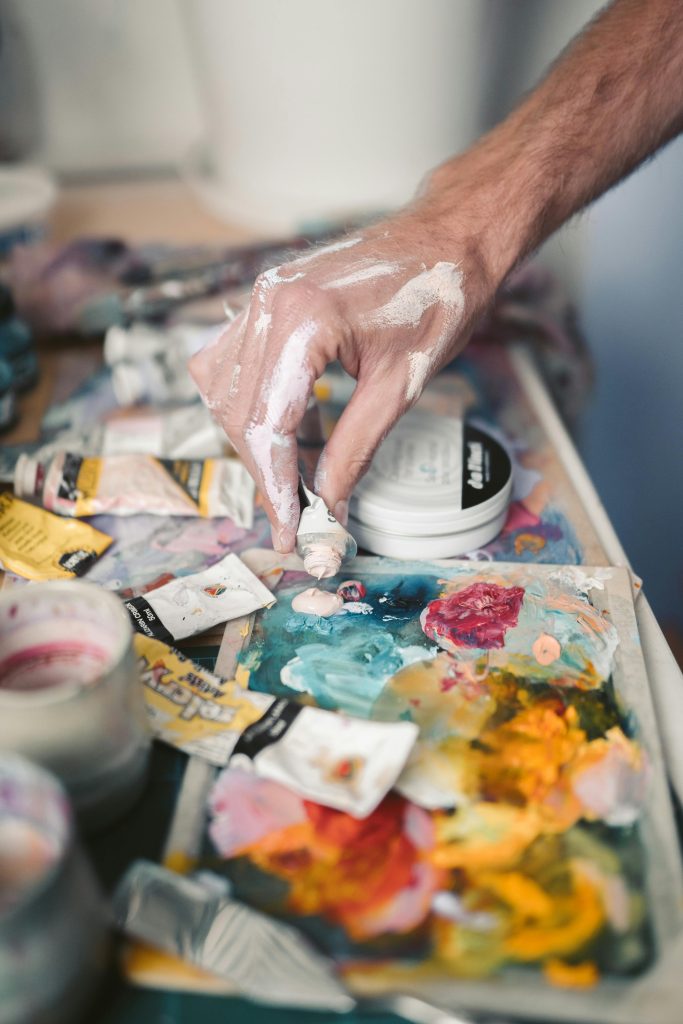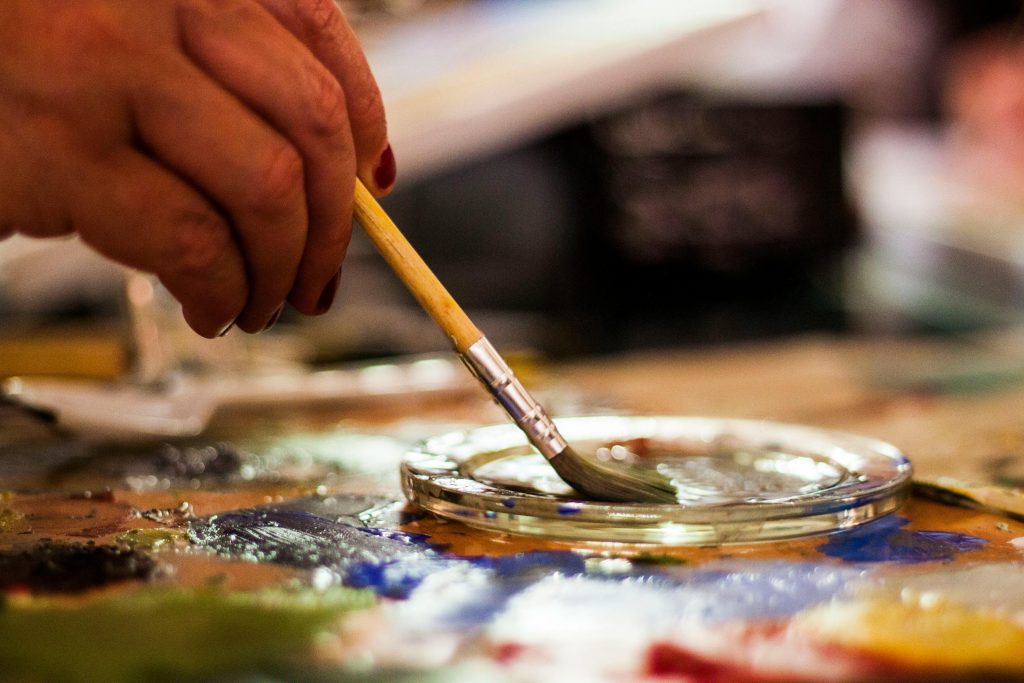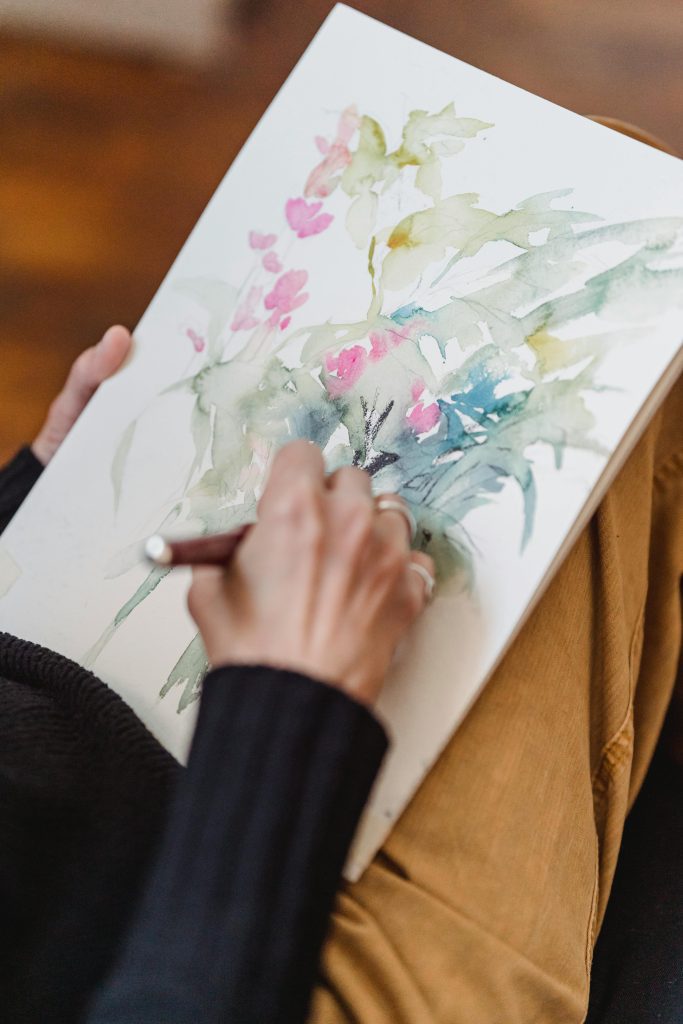How to Curate a Portfolio That shows Growth

1. Your Portfolio is a Not a Scrapbook
Let’s challenge a big idea: that your portfolio must tell your growth story. What if instead, your portfolio is about clarity, not chronology? In today’s saturated creative world, your audience isn’t looking for your origin story; they’re looking for a clear, bold window into your current identity as an artist.
Growth is messy, non-linear, and often deeply personal , and that’s beautiful. But when someone’s browsing your portfolio, they have limited time. They’re seeking cohesion, not a diary. Your job isn’t to take them on your full emotional journey , it’s to make them stop, look, and feel something now.
There’s nothing wrong with showing evolution , but it doesn’t always serve your goal. Growth-based portfolios can feel scattered. A sharp, focused selection of your strongest, most relevant work today? That hits harder. Think museum exhibit, not memoir.
Start asking: what do I want to be known for today? What work best supports where I want to go next , not where I’ve been? Your portfolio should operate like a pitch , not a time capsule.
Curating like this isn’t about denying your past. It’s about respecting your viewer’s attention and your own ambition. You’ve evolved , so let your portfolio reflect where you’ve arrived, not where you started.
2. Pick a Mood, Not a Map
Instead of laying things out chronologically, consider emotional continuity. What if your viewer doesn’t remember the medium or year , but leaves feeling haunted, delighted, or energized? Emotional consistency can unify work made years apart more effectively than a tidy timeline.
Think of it like curating a playlist. You don’t arrange your songs by when you wrote them , you arrange by vibe. Same goes for your portfolio. Create rhythm. Build emotion. Let one piece lead naturally into the next. If your earlier work doesn’t fit the mood, it’s okay to cut it.
This approach also frees you from showing everything. You might love a past series, but if it interrupts the current feeling or confuses the story, it’s better left out. Mood-focused curation is more experiential. It invites connection rather than analysis.
Play with this: if someone looked through your portfolio without knowing any dates or titles, what feeling would linger? That feeling becomes your throughline.
And remember , moods can evolve too. You can re-curate every season if you want. That’s the freedom of an artist who treats their portfolio as living, emotional space.
3. Highlight Mastery, Not Milestones
We often assume we must show the climb , from early, rough work to polished mastery , but here’s the thing: your audience is rarely evaluating your growth curve. They’re assessing your readiness. Your control. Your taste.
Milestones are meaningful to you, but mastery is what gets remembered. Instead of showing the stepping stones, just present the summit. If your older works don’t demonstrate your best skillset, they don’t belong here , even if they mark an important turning point for you.
This doesn’t mean every piece needs to be flashy. Quiet mastery counts. It just needs to feel intentional, confident, resolved. A tight portfolio that says “I know what I’m doing” builds trust much faster than one that says “Look how far I’ve come.”
Curate for impact, not nostalgia. Each work should hold its own weight. And together, they should whisper (or shout), “This artist knows their craft.”
Use your sketchbooks, blog posts, or artist talks to share your journey. But keep your portfolio clean, crisp, and centered on excellence.

4. Make Every Piece Serve the Bigger Picture
Curation is about relationship. Each piece in your portfolio should not only shine on its own but enhance the whole. If one piece sticks out stylistically, weakens the emotional tone, or confuses the viewer, it’s time to reassess its role.
Ask yourself: is this work strengthening or scattering the energy? Does it create flow or friction? Are you adding it out of sentiment, or does it really earn its place? Removing a beloved piece can hurt , but if it dilutes the overall power, you’re better off without it.
This might mean saying no to variety for the sake of cohesion. A few deeply resonant works often do more than twenty diverse ones. Less truly can be more , but only when “less” is sharply intentional.
When viewed as a whole, your portfolio should have a kind of internal gravity. Something that pulls the viewer in and keeps them there. That doesn’t happen by accident. It happens by deliberate selection, ruthless editing, and the confidence to focus.
Take a step back and view your portfolio as if it were someone else’s. Would you be intrigued enough to keep scrolling? Would you remember the feeling it left behind?
5. Treat Your Portfolio Like a Gallery Wall
Think spatially. Imagine your portfolio as a white cube gallery. What goes on the first wall? What hangs next to what? What space are you creating between pieces? Even online, this mindset changes everything.
Avoid cramming. Give your work breathing room. Let a quiet piece sit between two bold ones like a pause between intense conversations. Use spacing, sequence, and visual rhythm like a curator would in a physical show.
This also means being picky about image quality, framing, and background. A portfolio is a visual space. Make sure your work appears as professionally as possible. Blurry photos or mismatched formats can break the spell fast.
Play with pairings. Sometimes placing two unexpected works side by side sparks fresh meaning. Your portfolio isn’t just about each piece , it’s about the conversation between them. That’s where storytelling happens.
Think about how you want someone to move through your work , and design that path with intention.
6. Feedback Loops: What Others See That You Might Miss
When you’re immersed in your work, it’s easy to become blind to how it’s being perceived. What you think is a cohesive selection might actually come across as repetitive, and what you see as variety could feel disjointed to someone else. That’s why building feedback loops into your curating process is a game changer. You don’t need to take every opinion as gospel, but hearing how different viewers interpret your work can open your eyes to blind spots.
Start by showing your portfolio to a few trusted fellow artists, mentors, or even non-artist friends with a good eye. Ask specific questions like, “Do these pieces feel like they’re by the same artist?” or “Is anything jarring or out of place?” The responses might surprise you. People pick up on emotional consistency, mood, and visual cues that you may not notice after working closely with your own art.
It’s also helpful to review feedback over time. If multiple people are pointing out the same thing, say, that one series stands out in a negative way, it’s worth revisiting that part of the portfolio. Don’t let ego get in the way. Think of feedback as fuel, not fire.
Digital tools can support this process too. Platforms like Behance or even Instagram allow you to observe which works get the most traction or provoke thoughtful comments. These aren’t the ultimate curating tools, but they can offer clues into how your work is landing with broader audiences.
Lastly, feedback isn’t just for finished portfolios. It’s part of the evolution. Share drafts of your selection, test different arrangements, and be open to tweaking the flow. Your portfolio is a living document.
7. Medium and Scale: Mixing Without Losing Harmony
One of the biggest challenges in balancing consistency and variety is when your work includes a range of media and scales. Let’s say you’re a painter who also works with textile installations, or a photographer dabbling in sculpture. Including both can showcase your range, but only if done thoughtfully.
The key is to identify connective threads. Maybe all your pieces, regardless of medium, revolve around a common theme like migration or memory. Or maybe they share a distinct color palette, use of space, or conceptual framework. When those links are made clear, viewers will see the thread of continuity despite the differences in form.
Don’t be afraid to mix scale, but be mindful of flow. A tiny 5×7 graphite drawing next to a towering wall installation might feel awkward unless you frame their relationship intentionally. Try grouping works by experience, how they make the viewer feel, the time it takes to absorb them, or the narrative arc they form together.
If your portfolio is digital (which most are), be sure the transitions between works feel natural. Play with layout and space to guide the viewer smoothly between pieces. If it’s physical, think about sightlines, pacing, and breathing room.
This is also where a small curatorial statement can help. A few lines that explain why you’ve included such different forms, and what binds them, can be just enough to help your audience follow your thread without over-explaining.
8. Letting Go: The Art of Exclusion
Every artist has favorite pieces, works that carry deep meaning, mark major turning points, or just feel like a personal triumph. But those pieces aren’t always right for every portfolio. Curation is as much about letting go as it is about inclusion.
Start with the question: what is this portfolio for? If it’s meant to show your growth over time, that experimental series from three years ago might make sense. But if it’s for a gallery pitching a new solo show, it might need to go. Focus less on what you love and more on what serves the story.
This can feel like pruning a beloved garden. It’s okay to mourn pieces that don’t make the cut. Store them in an “archive” folder or a separate document. They’re not gone forever, they’re just not part of this particular narrative.
One trick is to create a “longlist” and a “shortlist.” Put everything you’re considering on the longlist, then slowly refine down to your strongest, most cohesive group. If a piece keeps getting cut and re-added, ask yourself why. Does it challenge the portfolio’s tone? Does it interrupt the visual rhythm?
Letting go also means resisting the temptation to over-explain. If you’re keeping a weaker piece just because you feel it “needs context,” maybe it’s not strong enough to stand on its own. And that’s okay. The goal isn’t to please everyone, it’s to build a portfolio that represents your best, most resonant self.

9. Telling Stories in Clusters: Grouping with Intention
One way to balance consistency and variety is by working in clusters, small groups of related pieces that form a sub-narrative within your larger body of work. These mini-series can show evolution, contrast, or process, all while giving your viewer breathing room to shift gears.
For instance, you might have a trio of works focused on climate themes, followed by a series exploring femininity through form. Each group can be visually distinct but emotionally or conceptually connected. The result? A portfolio that feels like a curated exhibit, not a slideshow.
Clustering also helps when you’re showing multiple styles. You don’t have to hide that you have a range, you just need to be strategic. By presenting similar pieces together, you acknowledge the shift while showing intentionality.
This method works beautifully for digital portfolios. Use visual breaks, headlines, or subtle design changes to signal shifts. If it’s physical, play with mounting, labels, or transitions to move the viewer through different chapters.
Just be sure to include a brief description of how each group fits into your overall practice. It doesn’t have to be long, but a sentence or two that threads them together can keep the viewer grounded.
10. Embracing Evolution: Your Portfolio Is Never Final
Here’s a truth artists don’t hear often enough: your portfolio is not a museum, it’s a studio. It’s a space to revise, reframe, and reimagine how your work is seen. And that means allowing for change.
It’s tempting to see the portfolio as a static thing, especially after you’ve spent hours perfecting it. But the more you grow, the more your work shifts. Styles deepen, themes evolve, and your sense of self as an artist matures. Your portfolio should grow with you.
Set a rhythm to revisit your selections. Every quarter? Every big project? After a major exhibition? Don’t wait until you have a deadline looming. Make it a regular part of your art practice.
Updating your portfolio also lets you test new directions. Add a new piece. Swap an old one. Rethink your layout. These small changes can spark bigger breakthroughs.
And remember, the Women in Arts Network is an ideal place to keep a portfolio that grows with you. Their platform allows you to easily upload, revise, and group your work without the pressure of creating a perfect final version. It’s built for women artists like you to experiment, connect, and be seen, on your own evolving terms.
11. Trusting Your Gut: The Intuition Factor
Not everything in curating your portfolio is technical. Sometimes, it comes down to instinct. You know when a piece just feels right, or wrong. Trust that.
You’ve spent time developing your voice, and your creative choices have power. When you look at a selection of works and something feels off, don’t ignore that nudge. Sit with it. Rearrange. Replace. Reflect.
That doesn’t mean ignoring structure or feedback. It means knowing when to bend the rules because something in your bones says, “this belongs.” Often, your intuition is tapping into things you haven’t yet articulated, emotions, themes, identity threads, that are just beginning to surface.
This also applies to moments when your portfolio feels too polished. If it lacks vulnerability, surprise, or personal flair, it might need some mess. Let yourself include the piece that’s a little risky, a little raw, if it holds meaning.
Trusting your gut doesn’t mean being impulsive. It means making space for quiet knowing. The portfolio is part map, part mirror. Use both your eyes and your inner compass to build it.
Your Portfolio Is Not a Resume
At the end of the day, your portfolio isn’t just a showcase, it’s a self-portrait. It’s not about checking boxes or pleasing every viewer. It’s about revealing who you are as an artist through intentional choices, honest storytelling, and thoughtful balance.
Balancing consistency and variety takes practice. It’s not a formula. Some projects will lean toward cohesion, others toward experimentation.
